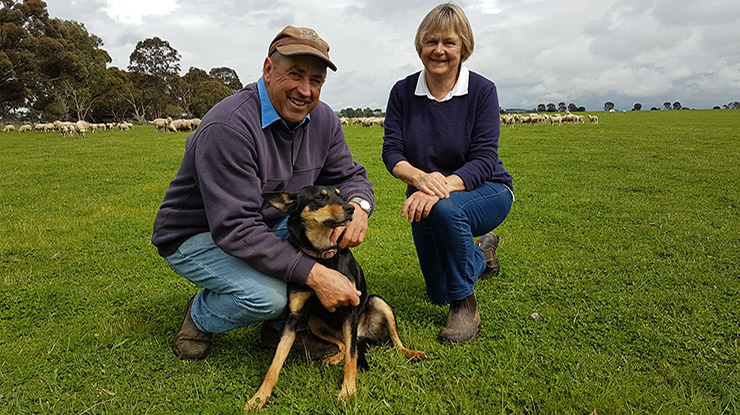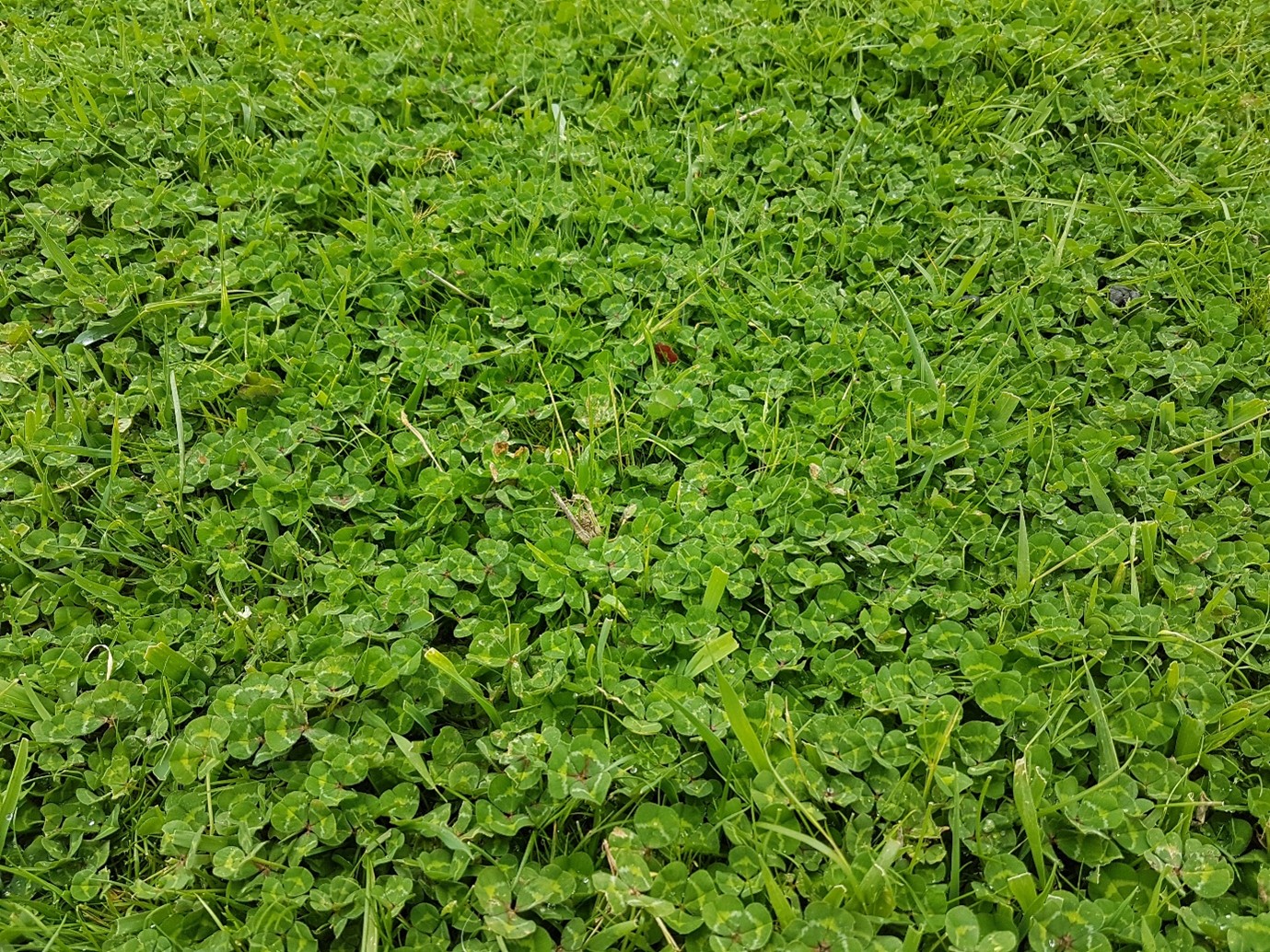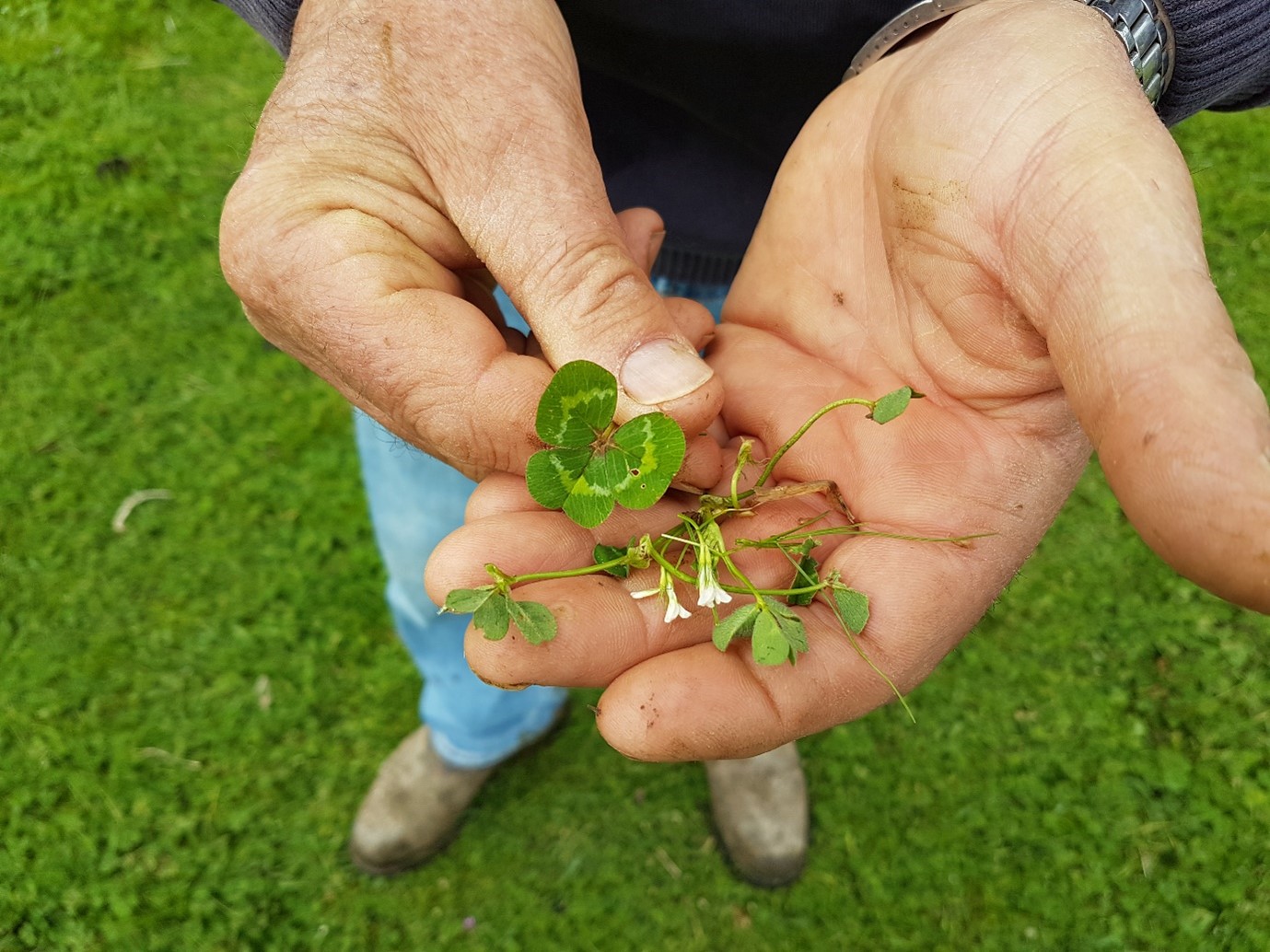High clover content, higher returns
27 January 2022

For Ararat producers Charlie and Liz de Fegely, sub-clover is a key contributor to their high-performing prime lamb operation.
The couple started improving their pastures in the early 1980s through a major renovation program. Today, their mix is predominantly phalaris and sub-clover, with some perennial ryegrass varieties added in recent years to increase total dry matter production.
This improvement program, along with a change from a self-replacing Merino flock to a maternal prime lamb flock several years ago, meant they could match pasture growth with animal demands more accurately.
The changes rewarded them with an increased average stocking rate from 7.5 to 15 DSE/ha, while higher clover content contributed to greater animal performance and reduced the need to supplementary feed. The majority of pastures on their property ‘Quamby’ have more than 50% sub-clover.
“We commence lambing in early July which matches peak lactation with increased pasture growth rates post winter,” Charlie said.
“Our lamb operation is based on selling stores rather than taking them through to slaughter, so we want to maximise our lamb growth rate.
“Our aim is to wean lambs and have them with an average body weight of 40kg at 100 days from the start of lambing.”
Getting the mix right
Charlie’s key to obtaining a good mix of clover and perennial grass is to sow high rates of clover.
“We’ve always sown Trikkala at 10kg/ha – those pastures are productive in the first year, so it’s not been necessary to sow any more after the initial sowing,” he said.
“Our experience in the first year of establishment is to graze the pasture hard for short periods up to and including early stages of flowering.
“Most times we find it necessary to spray for red-legged earth mites and after that first year we haven’t had to use further chemical control.”
In recent years, Charlie has tested Antas sub-clover, a brachy type sub that doesn’t actively bury its burr, sowing it at 10–15kg/ha. He’s found greater challenges with Antas compared with Trikkala, especially managing seed set.
The de Fegelys use high grazing pressure to have the pasture down to 1,000kg DM/ha, but with 90–100% ground cover, at the time of the opening rains in late April and May.
“This is sufficient to get good germination of clover in the second and subsequent years,” Charlie said.

Managing challenges
Trikkala’s suitability to the environment and management over the years has produced a large seed bank that has caused some issues with sowing new clovers.
“In recent years we have resown new clovers only to be swamped by the resident sub-clover,” Charlie said.
One of the disadvantages of high sub-clover content in pastures that Charlie has found is the build-up of weeds over time.
“Weeds appear to flourish on the nitrogen produced by the sub-clover, so we find it necessary to occasionally use herbicides to control barley grass, silver grass and broadleaf weeds,” he said.
“We use a spray/graze method to control these weeds and do it in conjunction with high stocking pressure.”

Reaping the rewards
Recently, the de Fegelys have measured the performance of new varieties of sub-clover through their prime lamb production.
The newly sown Antas sub-clover and Holdfast GT phalaris had twin lambs from ewe lambs growing at 0.43kg/day, while singles from ewe lambs grew at the same rate but were grazing Trikkala.
“I expected the twin lambs might have grown at 0.36kg /head/day if they were on Trikkala,” Charlie said.
“This is very exciting as it allows us to get lambs to target weights earlier and means we can clear the property of lambs prior to summer.”
The highly digestible pasture also provides excellent weaning feed, allowing the de Fegelys to confidently wean lambs at 70–80 days of age.
“My do’s are sow high rates of clover, control earth mites, apply necessary fertiliser and allow seed set,” Charlie said.
“However, you shouldn’t cut for hay in year one, and don’t laxly graze over summer and winter.”
|
LESSONS LEARNED 1. Sowing higher rates of clover sets up the paddock for high production and good seed set in its first year. 2. Don’t laxly graze over summer or winter, or you will reduce your sub-clover content. 3. Antas sub-clover, a brachycalycinum type, requires harder grazing than other sub-clover types during flowering to stop it from setting burrs up in the canopy and bring the burr to ground. |


